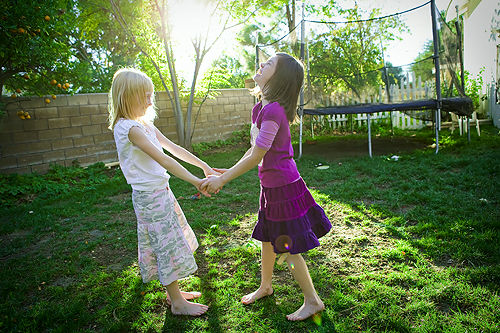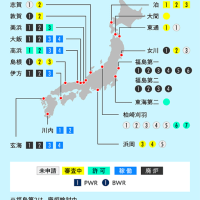2016-08-28 22:22:57 gigazine...NYTimes

THINK of all the people with whom you interact during the course of a day, week, month and year. The many souls with whom you might exchange a greeting or give a warm embrace; engage in chitchat or have a deeper conversation. All those who, by some accident of fate, inhabit your world. And then ask yourself who among them are your friends — your true friends. Recent research indicates that only about half of perceived friendships are mutual. That is, someone you think is your friend might not be so keen on you. Or, vice versa, as when someone you feel you hardly know claims you as a bestie.
It’s a startling finding that has prompted much discussion among psychologists, neuroscientists, organizational behavior experts, sociologists and philosophers. Some blame human beings’ basic optimism, if not egocentrism, for the disconnect between perceived and actual friendships. Others point to a misunderstanding of the very notion of friendship in an age when “friend” is used as a verb, and social inclusion and exclusion are as easy as a swipe or a tap on a smartphone screen. It’s a concern because the authenticity of one’s relationships has an enormous impact on one’s health and well-being.
“People don’t like to hear that the people they think of as friends don’t name them as friends,” said Alex Pentland, a computational social science researcher at M.I.T. and co-author of a recent study published in the journal PLOS One titled “Are You Your Friends’ Friend? Poor Perception of Friendship Ties Limits the Ability to Promote Behavioral Change.”
The study analyzed friendship ties among 84 subjects (ages 23 to 38) in a business management class by asking them to rank one another on a five-point continuum of closeness from “I don’t know this person” to “One of my best friends.” The feelings were mutual 53 percent of the time while the expectation of reciprocity was pegged at 94 percent. This is consistent with data from several other friendship studies conducted over the past decade, encompassing more than 92,000 subjects, in which the reciprocity rates ranged from 34 percent to 53 percent.
Mr. Pentland said it could be that “the possibility of nonreciprocal friendship challenges one’s self-image.” But the problem may have more to do with confusion over what friendship is. Ask people to define friendship — even researchers like Mr. Pentland who study it — and you’ll get an uncomfortable silence followed by “er” or “um.”
“Friendship is difficult to describe,” said Alexander Nehamas, a professor of philosophy at Princeton, who in his latest book, “On Friendship,” spends almost 300 pages trying to do just that. “It’s easier to say what friendship is not and, foremost, it is not instrumental.”
It is not a means to obtain higher status, wangle an invitation to someone’s vacation home or simply escape your own boredom. Rather, Mr. Nehamas said, friendship is more like beauty or art, which kindles something deep within us and is “appreciated for its own sake.”
Continue reading the main storyYet one of the most recognized treatises on friendship is Dale Carnegie’s decidedly instrumental “How to Win Friends and Influence People.” Pop stars like Taylor Swift and Drake are admired for their strategic, if not propagandist, friendships. And, of course, social media sites are platforms for showcasing friendships to enhance personal image.
“Treating friends like investments or commodities is anathema to the whole idea of friendship,” said Ronald Sharp, a professor of English at Vassar College, who teaches a course on the literature of friendship. “It’s not about what someone can do for you, it’s who and what the two of you become in each other’s presence.”
He recalled the many hours he spent in engrossing conversation with his friend Eudora Welty, who was known not only for her Pulitzer Prize-winning fiction but also for her capacity for friendship. Together they edited “The Norton Book of Friendship,” an anthology of works on the topic. “The notion of doing nothing but spending time in each other’s company has, in a way, become a lost art,” replaced by volleys of texts and tweets, Mr. Sharp said. “People are so eager to maximize efficiency of relationships that they have lost touch with what it is to be a friend.”
By his definition, friends are people you take the time to understand and allow to understand you.
Because time is limited, so, too, is the number of friends you can have, according to the work of the British evolutionary psychologist Robin I.M. Dunbar. He describes layers of friendship, where the topmost layer consists of only one or two people, say a spouse and best friend with whom you are most intimate and interact daily. The next layer can accommodate at most four people for whom you have great affinity, affection and concern and who require weekly attention to maintain. Out from there, the tiers contain more casual friends with whom you invest less time and tend to have a less profound and more tenuous connection. Without consistent contact, they easily fall into the realm of acquaintance. You may be friendly with them but they aren’t friends.
“There is a limited amount of time and emotional capital we can distribute, so we only have five slots for the most intense type of relationship,” Mr. Dunbar said. “People may say they have more than five but you can be pretty sure they are not high-quality friendships.”
Such boasting implies they have soul mates to spare in a culture where we are taught that leaning on someone is a sign of weakness and power is not letting others affect you. But friendship requires the vulnerability of caring as well as revealing things about yourself that don’t match the polished image in your Facebook profile or Instagram feed, said Mr. Nehamas at Princeton. Trusting that your bond will continue, and might even be strengthened, despite your shortcomings and inevitable misfortunes, he said, is a risk many aren’t willing to take.
2016-08-28 22:22:57 gigazine...NYTimes
2016年08月27日 07時37分00秒
あなたが友だちだと思っている人の半分はあなたを友だちだと思っていない
by asobi tsuchiya
自分が「友情」と考えている関係のうち、相手も「友情だ」と考えている関係は約半分だということが研究によって判明しました。つまり、この内容に従うと自分が「友人だ」と考えている人の半数は自分のことを友人だと考えておらず、また自分が友人だと思っていない人の中にも自分のことを「友人だ」と考えている人がいるということ。なぜこのような認識の差異が起こるのか、そもそも「友情」とは何か?ということについて、The New York Timesがまとめています。
Do Your Friends Actually Like You? - The New York Times
http://www.nytimes.com/2016/08/07/opinion/sunday/do-your-friends-actually-like-you.html
「自分が友だちだと思っている人の半分は自分を友だちだと思っていない」という調査結果については、「人々の認識と実際の友情の間にある隔たりについて、人間は基本的に楽観的である」と主張する研究者が存在したり、「SNSの世界では『フレンドになる』という言葉が使われていることから、世代によって認識の違いが存在するのではないか」という説を展開する研究者がいたりと、大きな議論を呼びました。
2016年3月に発表された研究では、ビジネス・マネージメント・クラスを受講する23歳から38歳の被験者84人を対象に、互いのことを「知らない人」から「親友の1人」までの5段階で評価してもらいました。その結果、「友情が両思いである」と認識している人が94%であるのに対して、実際に両思いである割合は53%ということが判明。同様の調査は過去10年に複数回行われており、9万2000人を対象とした調査では友情が両思いである割合は34~53%だという結果が出ているので、最新の調査と過去の調査の結果は一致しているということになります。
by Hernán Piñera
プリンストン大学の哲学者であるアレキサンダー・ネハマス教授は「友情を言葉で説明するのは難しく、『何が友情でないか』を語る方が容易です」と述べており、友情の定義づけが難しいことが、このような認識の際を生み出しているということも考えられます。「休暇中に招待されること」や「一緒にいて退屈しないこと」というような項目に当てはまれば即座に「友情である」と判断できるわけではなく、むしろ友情は美や芸術といった事柄に似ていて、利益を得られるか否かではなく、自分の深くまで入り込み、「そのもの自体に感謝する」といったものであるとのこと。
一方で、友情に関する論文のうち最も有名なのはデール・カーネギー氏による「How to Win Friends and Influence People(人を動かす)」というものです。「人を動かす」は日本国内で430万部、世界で1500万部以上を売上げたというベストセラーですが、「人を動かす三原則」「人に好かれる六原則」といったことが項目化されています。また、著名人の中でもテイラー・スウィフトなどは戦略的に「親しみやすさ」「友情」を取り入れることで成功しました。そしてソーシャルメディアも、「友情」を商品化することで拡大することに成功しています。
これらのことから、「友情」の感覚が変化しているという声もあります。ヴァッサー大学で英語を教えているロナルド・シャープ教授は「何もせずに、ただ一緒にいるという友だちは今や『失われた芸術』なのです。人々は人間関係の効率を最大化することに夢中で、何が友情なのかを忘れています」と語りました。なお、シャープ教授は友人関係を「相手を理解するために時間を割き、自分を理解させることに時間を割ける人々」と定義しているそうです。
また進化心理学者のロビンI.M.ダンバー教授は「人の友情はピラミッド状になっている」と主張しています。ピラミッドの最上部には配偶者や親友といった、日常的に親密な関係を持っている人が1~2人存在し、次の層には強い共感や親しみを持ち、毎週関わりを維持している人が4人ほど。それ以外の人々はつながりが薄い、よりカジュアルな関係であるとのこと。そして、ピラミッドの上位に位置する人々との関係を維持するためには安定した交際が必要で、それがなければ友人は「親しみを持って接するが親しくはない」という「知人」レベルに容易に落ちるそうです。「人の時間は有限で、また人は感情的に重要な部分を持つため、強いつながりのある人間関係を持てるのは5人ほどに限られます。多くの人は『5人以上の友人がいる』と考えているでしょうが、上位5人以外の人については『極めて重要な友情』と言えないはずです」とダンバー教授は語りました。
by Julie
「人に頼ることは弱さの表れで、力のある人は他の人に影響されない」という文化において、ソウルメイトは替えのきくものだと思われがちです。しかし、友情とは本来、FacebookのプロフィールやInstagramのフィードに投稿されているようなきらびやかな自己イメージの下にある自分自身を相手の前にさらし、相手の弱さに対して配慮するという性質を持ちます。欠点があるにも関わらず信頼というつながりを強くできるのが友情なのですが、「欠点や弱さをさらす」という行為は非常にリスキーなため、行動に移さない人も多く存在します。
しかし、リスクを取らずに浅いつながりばかりを選び、両思いでない、むなしい人間関係ばかりを持っていると、人間の体は影響を受けます。過去に行われた研究では、孤独は喫煙・アルコール依存・肥満などと同様に死亡率を上げるとのことが判明しています。
孤独になるのは致命的、社会的に隔離されることは肥満よりもはるかに有害 - GIGAZINE
インターネットを通して簡単に人とつながれるようになった現代ですが、孤独感をやわらげるにはネットでなくリアルで顔と顔をつきあわせる必要があるのも事実。友情を定義することは非常に難しいことですが、誰が自分のために時間を割いてくれて、誰が自分の気持ちを豊かにしてくれ、誰が自分を恋しく思ってくれて、そして自分が恋しく思うのは誰なのかを見直すことが、今後の人生にとって非常に重要になってきそうです。
























※コメント投稿者のブログIDはブログ作成者のみに通知されます